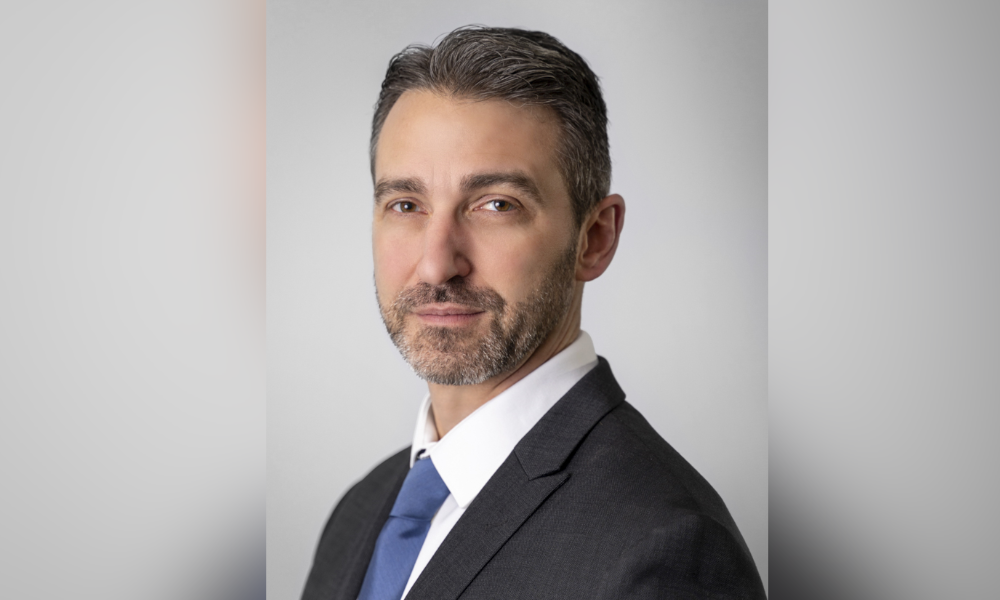Calls for regulations to guide TPL funding

Calls for regulations to guide TPL funding | Insurance Business America
Risk Management News
Calls for regulations to guide TPL funding
How are rising court decision payouts impacting insurance companies?
Risk Management News
By
Desmond Devoy
This article was produced in partnership with McGill and Partners.
Desmond Devoy, of Insurance Business America, sat down with Casey Petersen, head of US casualty for McGill and Partners, to discuss the lack of disclosure and regulation around third-party litigation funding.
An insurance leader is calling for increased disclosure and regulation around third-party litigation financing.
Speaking from his Chicago-area office, Casey Petersen (pictured), head of US casualty for McGill and Partners, said that fund managers and other third parties who finance legal action against companies by accepting legal assets as collateral in return for a percentage of any award will drive a cost beyond the courtroom.
“It is a largely unregulated industry that is growing at a rapid pace and is driving verdicts at trial,” said Petersen. Payouts are headed “north at an unprecedented pace,” he said.
“Couple that with inflation, social inflation, wage inflation, it is starting to create a problem within the insurance industry that is unsustainable without regulation.”
How big is the market?
According to previous reporting from Insurance Business America, the US is the dominant player in the world’s third-party litigation (TPLF) industry. More than half of the US$17 billion investment in litigation funding globally was deployed in the US in 2020 alone. TPLF investment then jumped by 16% year-over-year in 2021. A report published that year projected that TPLF could be a US$30 billion+ industry by 2028, driven by the US market.
This has had an impact on the liability insurance industry because TPLF can encourage prolonged litigation and larger monetary awards, to the benefit of funders not plaintiffs. Insurance carriers started raising excess casualty rates significantly in 2019 and continue today. Some insurance buyers are paying two to three times their premium spend compared to 2018.
While the costs of high payouts are being passed on to policyholders, a report by the Insurance Research Council found that two out of five Americans (39%) indicated that they had never heard of litigation funding. It is not just Mr. Petersen who has concerns about the practice.
A 2022 Bloomberg Law survey found that 46% of lawyers agree with the statement that litigation finance “enables more frivolous lawsuits.” (However, 64% also agreed that disclosure of litigation finance deals should be mandatory at the start of all cases.)
One manifestation of this system is hidden in plain sight, the increasing volume of TV ads from lawyers promising the potential for a big cash settlement if you’ve been, say, involved in a workplace incident, auto accident involving a trucking company, and many others. Private equity money “is effectively funding advertisements,” said Petersen. “So they can push more and more tort liability. It’s a revolving door.”
With a profit motive at play, the funders behind a lawsuit “want a verdict to come through that will ultimately drive up the settlement.” They want to get before a jury as it increases their likelihood of a bigger payoff compared to an out-of-court settlement. However, it’s not disclosed to a jury that litigation funding is involved in the case. Not only will the lawyer be earning 20-30% of an award, but unbeknownst to the jury, the litigation firm will take another 20-30%, leaving the plaintiff little or no money.
The frequency of nuclear verdicts has had an adverse effect outside the courtroom as well.
“Carrier settlements are on the rise. Why? Is it because the last thing they want to do is go to trial and face a nuclear verdict?” asked Petersen, rhetorically. “What a carrier may have defended in the past now results in a settlement offer higher than properly valued.”
Changes brewing in the states?
This type of funding is nothing new. Prohibitions were loosened in 2010, which is when the funding became more prevalent. And in the 13 years since then, the industry has seen the average settlement for a single auto collision fatality rise from about $2 million to north of $10 million.
Only 12 states have some form of formal legislation around this practice, involving anything from full disclosure about who is funding the case to the jury, to how much the interest rate might be in the case.
“While this is a good start, it is not enough,” he said. “Not surprising, none of these states are where they have the most verdict award issues.”
The state of California has introduced SB 581, which he calls “significant.” The bill pushes for disclosures, as well as caps on charges, interest rates, and timeframes. Back in November, the US Chamber of Commerce’s Institute for Legal Reform called for strict limits on third-party litigation funding, according to Reuters.
In a report it published that month, the chamber put forward that foreign actors could use investments in US lawsuits to undermine national security. The chamber has long sought regulation of litigation funders to heighten disclosure and reporting requirements. Even Evan Greenberg, chairman and CEO of Chubb, spoke out about the matter at a recent insurance industry event in Atlanta.
“We are not saying litigation funding should be illegal,” said Petersen. “No. There are certain instances where funding is warranted as it can open up access to justice. Cases where individual plaintiffs cannot afford to take certain cases all the way to a three to five-year trial process,” especially when going up against a team of corporate lawyers.
Education, reform and safety – What to do
“First, we need regulatory reform. Making sure TPLF firms are registered with a state, required to disclose, setting caps on rates, and timeframes is sound business practice for all,” Petersen said.
He wants brokers and others in the industry to be knowledgeable of the practice and engage with state officials to create reform to protect all parties.
Until regulation and reform is implemented in all states, he encourages his fellow insurance industry colleagues to assist insurance buyers with their risk management policies and procedures in order to create safe working environments for employees and to the general population.
“It’s education,” Petersen said. “At the end of the day, the insurance industry exists to provide balance sheet protection to buyers and pay those claims that are rightfully due. Third party litigation funding does provide a valuable service in specific circumstances, but left unchecked can create more harm than good.”
Related Stories
Keep up with the latest news and events
Join our mailing list, it’s free!






